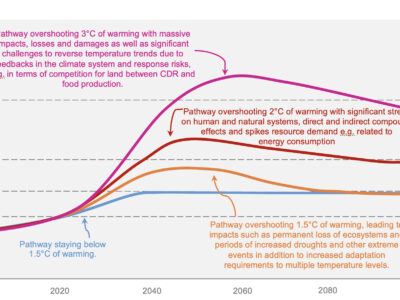As partisan politics, systemic racism, and violence dominate the news cycle, it can be easy to lose sight of evidence from a variety of disciplines which suggests that for the vast majority of human history, Homo sapiens have lived in peace. Despite this, today many societies around the world struggle with fractures and divides. Science could offer meaningful contributions to peace policy and programming, but most peace scholars tend to study what prevents and mitigates conflict rather than focusing on what sustains positive peace. In response, the Advanced Consortium on Cooperation, Conflict, and Complexity’s Sustaining Peace Project was launched in 2014 to better understand what leads to sustainable peace.

The Sustaining Peace Project includes six key components: (1) Developing a basic theoretical model of the core dynamics of sustainably peaceful societies; (2) Learning from complexity and creating visualizations that map the ways observed peace-related factors interact; (3) Examining historical and ethnographic data comparing peace and non-peace systems to uncover key variables associated with peace; (4) Mathematical modeling of the ways these different factors interact over time to create robust and resilient cultures of peace; (5) Learning from peaceful communities and ground truthing the theoretical model through dialogues with local stakeholders in peaceful societies; and (6) Developing new methods and metrics for measuring and tracking trends related to sustaining peace.
Six years into this process, what have we learned?
A recent publication in American Psychologist provides a progress report on this initiative and identifies several key lessons learned:
- There are currently many groups around the world that choose peace over war. There is no single sustainable peace as peace takes many forms, but despite its local nuance and complexity, it can be modeled and understood in very basic terms: a high ratio of positive intergroup reciprocity to negative intergroup reciprocity that is stable over time.
- Our preliminary analysis of peace systems versus non-peace systems suggests that the basic dynamics at the core of our model of sustainably peaceful societies are valid—even though most of these findings highlight simple unidirectional cause and effect relationships, rather than showing how often times, factors mutually reinforce one another over time through feedback loops. This is one limitation of the existing science that our mathematical modeling has been able to begin to supplement and address.
- Running the mathematical model over long periods of time revealed that societies reach only two stable end points: one for sustainable peace where the constructive peace factors have high values and the destructive conflict actors are low, or the opposite.
- Our modeling has also shown that while destructive conflict factors tend to have a stronger and longer-lasting impact than constructive peace factors, these can be mitigated by including many additional positive peace factors, or by simply strengthening key “gateway” positive factors. One hopeful takeaway is there is no single path to peace — there are multiple policy approaches that could lead to a sustainable and positive state.
- Although there are currently widely used, top-down, one-size-fits-all indices which track and rank national peacefulness, it is imperative to contextualize key factors in local understandings. There is a dire need for more flexible and locally informed metrics which track and measure peace and the factors which help build and sustain positive intergroup relations.
Recently, we launched the Sustaining Peace Project website, which includes an overview of the project and a map locating contemporary societies sustaining peace. An interactive version of the causal loop diagram allows users to click on the variables and links between them to access evidence supporting the diagram, and an interactive version of the mathematical model encourages users to plug in values and play with the model.
While this initiative is an ambitious undertaking, progress to date highlights the ways a variety of scientific methods and modes of inquiry can contribute to our understanding of the processes and dynamics which can lead to a more durable and holistic peace.
Peter Coleman is a professor of psychology and education, and co-director of the Advanced Consortium for Cooperation, Conflict, and Complexity (AC4). Allegra Chen-Carrel is the program manager for the Sustaining Peace Project at AC4.



